Colorful Freshwater Shrimp: Your Guide to Vibrant Aquarium Varieties and Care
Freshwater shrimp can be a fascinating addition to an aquarium. These small, charming creatures act as efficient cleaning machines, clearing algae from your tank while providing endless entertainment as they scuttle around. There are clear benefits to keeping them, but they may not suit every aquarium. It’s wise to conduct some research before adding them, especially if you already have other livestock in your tank.
- Types of Freshwater Shrimp for Home Aquariums
- How to Set Up an Aquarium for Shrimp?
- How to Care for Aquarium Shrimp?
- Suitable Tank Mates with Shrimp
- Freshwater Aquarium Shrimp Lifespan
- Breeding Freshwater Shrimp
- Shrimp Illnesses and Diseases
- What Shrimp for a Beginner Tank?
Types of Freshwater Shrimp for Home Aquariums
A wide variety of shrimp are available for freshwater aquariums. Whether you’re planning a shrimp-only tank or want to add them to a community setup, you should consider which type you prefer and ensure your aquarium’s water conditions and existing fish are compatible.
Below are the most common freshwater shrimp available for purchase, along with brief details about each type to help you decide which is best for your aquarium.
Cherry Shrimp
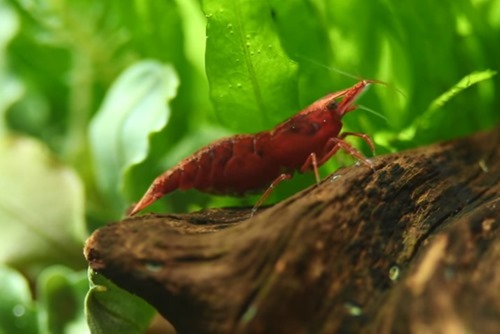
Red Cherry shrimp for sale #ad
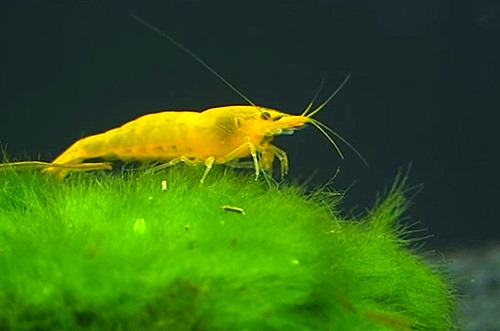
Cherry shrimp are incredibly popular among shrimp enthusiasts worldwide, and it’s easy to see why. They excel at eating algae, helping keep your tank clean, and their vibrant colors make them a standout feature.
Native to Taiwan, these shrimp are very easy to care for, making them an excellent choice for beginners. They breed readily, grow to about 1.5 inches, and are among the smaller shrimp species available. Thanks to their compact size, they can thrive in a tank as small as 5 gallons.
Amano Shrimp
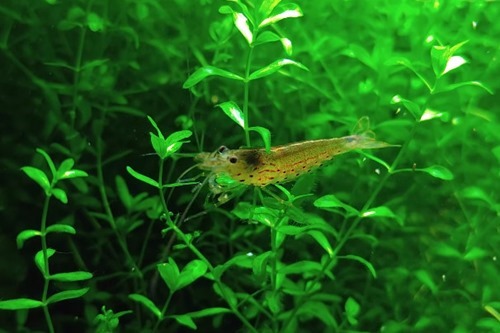
Amano shrimp are another highly popular choice for aquariums. Renowned for their algae-clearing abilities, they are highly effective tank cleaners. However, they benefit from a varied diet, so it’s best to supplement their algae intake with specialized shrimp food.
These shrimp thrive in planted tanks with plenty of cover, where they can hide and feel secure. They grow up to 2 inches and are well-suited for beginners. The recommended minimum tank size for Amano shrimp is 10 gallons.
Bee Shrimp – Crystal Red/Black Shrimp
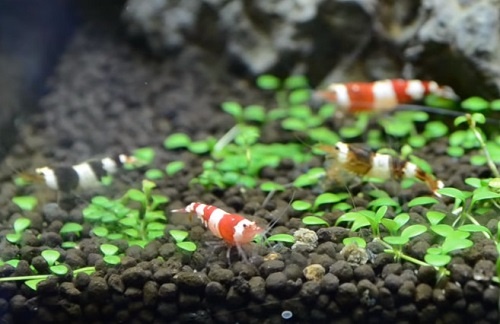
Bee shrimp, also known as Crystal Red or Crystal Black shrimp, are less common due to their more demanding care requirements. They are fragile and highly sensitive to water changes, so they’re best suited for keepers who can maintain consistently ideal water conditions.
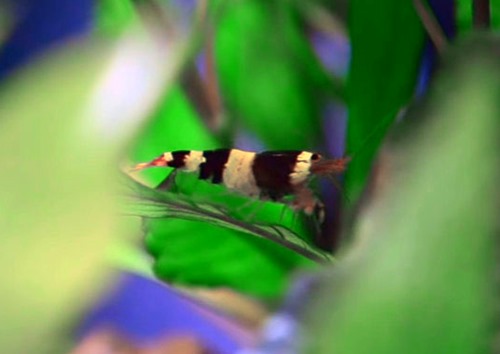
Panda shrimp, a variety of Taiwan Bee shrimp, are named for their striking black-and-white bands, reminiscent of a panda bear. They are a captivating addition to any tank.
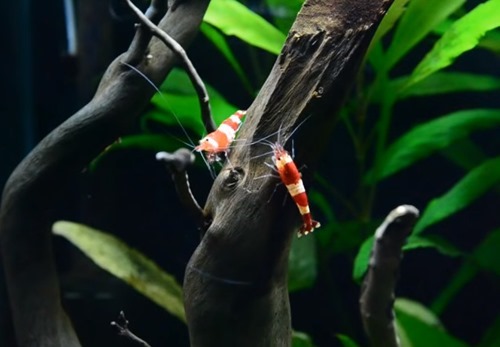
Red Panda/Red Bee/Crystal Red shrimp #ad
Bee shrimp enjoy hiding, so ample cover is essential in their tank. They lack defenses against predatory tankmates, so avoid housing them with aggressive or hungry companions. They grow to an average of 1.2 inches and are recommended for intermediate keepers. A minimum tank size of 5-10 gallons is advised.
Bamboo Shrimp
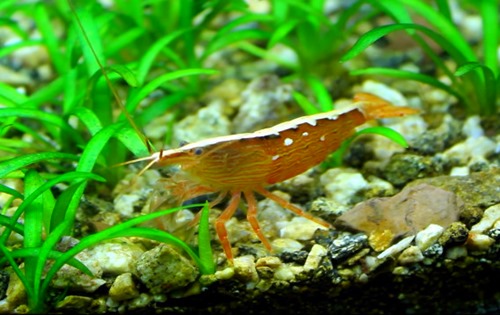
Bamboo shrimp are among the most popular freshwater shrimp for aquariums. Native to Southeast Asia, they feed by filtering microorganisms and algae from the water, which serves as their primary food source. Unlike some shrimp, they don’t typically graze on algae growing on tank surfaces or décor, so don’t be surprised if they seem less active in that regard.
These shrimp grow to about 4.5 inches and are easy to care for, making them suitable for beginners. They molt every 45-65 days, a process that’s fascinating to observe. Bamboo shrimp are active and enjoyable to watch as they move around the tank. A minimum tank size of 20 gallons is recommended.
Vampire Shrimp
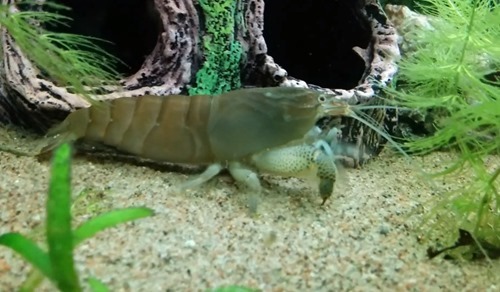
Vampire shrimp, native to South America and West Africa, are less common but can live up to five years in captivity—far longer than most freshwater shrimp species. Their color varies, ranging from blue to gray, brown, or even pink, and they frequently change hues, adding a dynamic splash of color to your tank.
As filter feeders, they obtain nutrients from the surrounding water and typically don’t require additional feeding. They grow to 2-3 inches and are suitable for beginners with proper research. A minimum tank size of 20 gallons is recommended.
Blue Velvet Shrimp
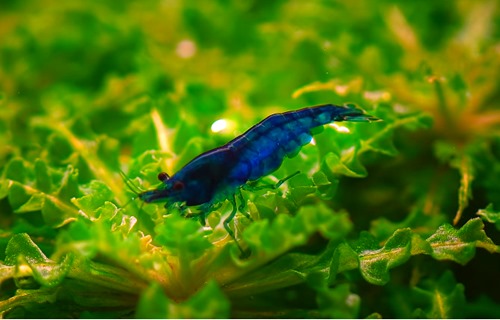
Blue Velvet Shrimp for sale #ad
Blue Velvet shrimp are vividly colored blue shrimp that prefer to hide, making a heavily planted tank ideal. Their bright hue can attract attention from tankmates, so hiding spots are essential if they’re kept with other species.
These shrimp love grazing on algae growing on tank décor and surfaces, helping maintain cleanliness. They grow to 1.5-2 inches and are beginner-friendly, requiring a minimum tank size of 5-10 gallons.
Blue Tiger Shrimp
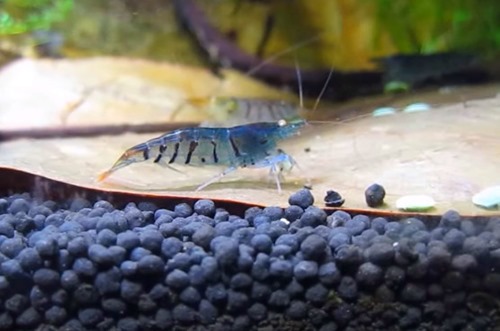
Blue Tiger shrimp are visually striking, with deep blue bodies and black tiger-like stripes. Their bright orange eyes and long feelers add to their vibrant appearance, making them a colorful aquarium standout.
They are more challenging to care for due to their sensitivity to water condition changes and poor water quality. They require a well-maintained tank with an efficient filter and optimal water parameters. They grow to 1-1.2 inches and are suitable for beginners willing to maintain pristine water conditions. A minimum tank size of 10 gallons is recommended.
Snowball Shrimp
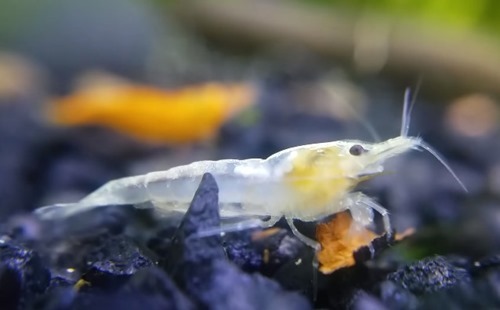
Snowball shrimp, also known as White Pearl shrimp, are ideal for breeding enthusiasts. They reproduce quickly, laying bright white eggs that resemble tiny snowballs and hatch in about 30 days.
Their milky white color makes them a beautiful addition to any tank. They grow to 1-1.5 inches and are perfect for beginners, especially those interested in breeding shrimp. A minimum tank size of 5 gallons is recommended.
Ghost Shrimp
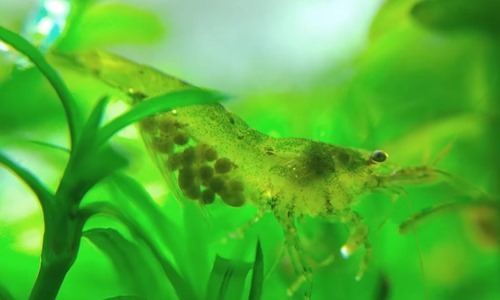
Ghost shrimp, also called Glass shrimp, are captivating due to their transparent bodies, which serve as a natural defense mechanism. They are active scavengers, often seen searching for algae to eat, and they help keep your tank clean.
They prefer plenty of cover and thrive in planted tanks or setups with wood and décor for hiding. They grow to 1.5 inches and are beginner-friendly, requiring a minimum tank size of 5 gallons.
Indian Whisker Shrimp
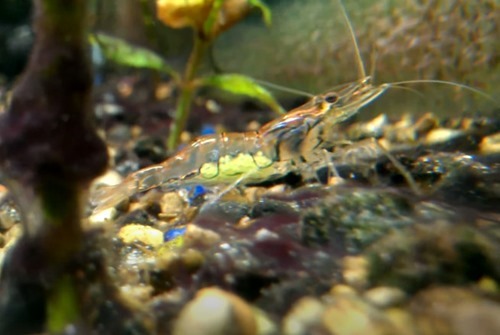
Indian Whisker shrimp can be aggressive for a shrimp species, occasionally preying on smaller fish if given the chance. Due to their larger size, house them with tankmates that won’t become easy prey or view the shrimp as a snack.
Their transparent bodies allow them to blend in, and they prefer scavenging leftover food rather than eating algae. Supplement their diet with shrimp food as needed. They grow to 2 inches and are suitable for beginners who understand compatible tankmates. A minimum tank size of 5 gallons is recommended.
Pinto Shrimp
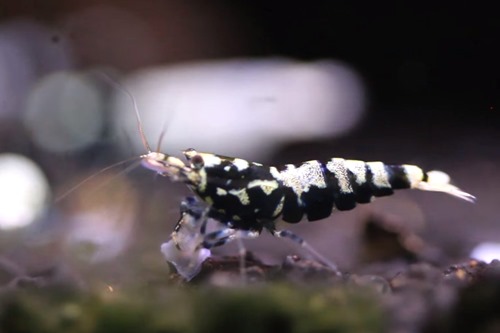
Pinto shrimp are less common due to their sensitivity to water changes and need for stability. Available in white-and-black or white-and-red varieties, they add charm to a tank. They enjoy grazing on algae biofilm from décor and plants, aiding cleanliness.
Supplement their diet with specialized shrimp food. They grow to 0.75-1 inch, making them one of the smaller species, and can be kept by beginners in a minimum tank size of 25 gallons.
Blue Bolt Shrimp
 10+1 Blue Bolts, Mixed Grade S-SSS #ad
10+1 Blue Bolts, Mixed Grade S-SSS #ad
Blue Bolt shrimp feature a stunning blue-and-white pattern and stand out in any aquarium. They prefer hiding spots, so a planted tank with ample cover is ideal. They are sensitive to water spikes, so maintain ammonia and nitrite levels at 0 for their health.
They grow to 1 inch and are best suited for intermediate keepers. A minimum tank size of 5-10 gallons is recommended.
Babaulti Shrimp
 Aquatic Arts 5 Zebra Babaulti shrimp #ad
Aquatic Arts 5 Zebra Babaulti shrimp #ad
Babaulti shrimp are easy to care for and come in various colors, most commonly green or brown. As omnivores, they feed on algae and plant detritus to sustain themselves.
They grow to 1-1.4 inches and are beginner-friendly, requiring a minimum tank size of 5 gallons.
Red Rili Shrimp
Red Rili shrimp, selectively bred from Cherry shrimp, are popular and easy to maintain. They feature red coloring with transparent patches and scavenge tank waste efficiently.
They grow to 1-1.5 inches and are suitable for beginners, thriving in a minimum tank size of 5 gallons.
These are just some of the many shrimp species available for your aquarium. When choosing, consider your water parameters and existing livestock to ensure compatibility.
How to Set Up an Aquarium for Shrimp?
Shrimp Tank Size
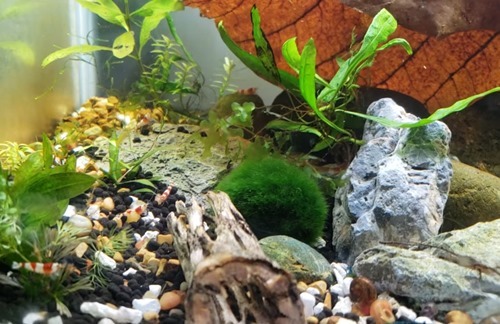
Bee shrimp planted tank with Marimo Moss Ball and Cholla wood
When keeping freshwater shrimp, a suitable tank setup is essential for their well-being.
Shrimp generally don’t grow very large (averaging 1-4 inches) and thrive in groups rather than alone. A 10-gallon tank is typically sufficient for most species, though larger varieties may require more space. The ideal size depends on how many shrimp you plan to keep and whether you’ll include other fish.
A planted tank is highly recommended for shrimp, and we’ll explore this in more detail below.
Substrate and Basic Décor
The best substrates for shrimp tanks are sand, soil, or fine gravel, as they prefer softer surfaces they can dig into and navigate easily. For décor, options like wood, plants, caves, and larger stones work well alongside shrimp.
Shrimp feel safer with hiding spots, preferring dark, dense areas where they can avoid predators. Live plants are an excellent addition, offering both cover and an extra food source, as many shrimp enjoy grazing on moss and algae growing on plants and other decorations.
Filtration
Shrimp are delicate when it comes to filtration, particularly due to their small size. If using a powerful external or hang-on-back filter, cover the intake with a sponge or foam to prevent shrimp from being sucked in. Air-driven sponge filters are an excellent choice for shrimp-only tanks.
Heating
A heater isn’t always necessary for shrimp, depending on your room’s temperature, the presence of other fish, and whether the temperature fluctuates. However, using an aquarium heater is recommended to maintain a stable temperature.
Ensure the heater can hold a consistent temperature, as sudden changes can harm your shrimp and other livestock. A thermometer in the tank will help you monitor the heater’s performance and ensure steady water conditions.
Lighting
Lighting isn’t essential if your room has natural light, except for viewing the shrimp or supporting plant growth in a planted tank. For a shrimp-only tank without plants, a simple clip-on LED light works well.
If you use lighting, aim for 8-10 hours daily, followed by a period of darkness or natural room light. Many shrimp keepers, especially those with planted tanks, use timed lighting systems to maintain a consistent schedule without manual effort.
The setup and cycling process for shrimp tanks mirror those for freshwater fish. After gathering your equipment, consult our guides on aquarium setup and fishless cycling to prepare your tank for shrimp.
How to Care for Aquarium Shrimp?
Shrimp are relatively low-maintenance, provided their water parameters suit their species and they have adequate food, which is rarely an issue since they usually find something to eat in the tank.
Don’t worry too much if you don’t see your shrimp for a while—they’re experts at hiding, especially when feeling threatened. Dimming the lights and offering shrimp treats can coax them out if you’re concerned.
Water Requirements
Shrimp thrive in water temperatures between 72°F and 76°F, though some species tolerate a broader range.
A pH of 6.5-7.0 suits most freshwater shrimp, but certain species prefer a slightly different range—always check your specific type.
Water quality should match that of tropical freshwater fish: 0 ammonia, 0 nitrites, and nitrates below 20 ppm.
GH and Mineral Supplements
Water hardness, specifically general hardness (GH), is critical for shrimp health.
GH measures calcium and magnesium levels in the water. Lower GH indicates fewer of these minerals, which are essential for shrimp to molt successfully. Calcium carbonate helps harden their new shells, while magnesium aids calcium absorption—both are vital.
The optimal GH for most shrimp is 6-8, but confirm this for your specific species.
Monitor GH with an aquarium test kit, especially in a new tank, to ensure shrimp get the nutrients they need and avoid harmful substances like ammonia or nitrites.
 Tourmaline mineral balls for shrimp #ad
Tourmaline mineral balls for shrimp #ad
If GH is too low, add shrimp-safe mineral supplements containing calcium, magnesium, iron, and boron to support healthy molting.
Shrimp Foods and Feeding
Feeding shrimp is straightforward and depends on your chosen species. Most feed primarily on algae growing on tank surfaces, plants, and décor.
 Shrimp Food, Cholla Wood, Alder Cones and Japanese Mineral Balls #ad
Shrimp Food, Cholla Wood, Alder Cones and Japanese Mineral Balls #ad
Shrimp derive significant nutrition from biofilm on plant leaves, wood, or submerged surfaces—mimicking their natural habitat, where fallen leaves enrich rivers. Adding items like Cholla wood, alder cones, Indian almond leaves, or guava leaves can enhance their diet.
 GlasGarten Bacter AE Shrimp Tank Treatment #ad
GlasGarten Bacter AE Shrimp Tank Treatment #ad
 Fluval Shrimp Granules - 1.2 Ounces #ad
Fluval Shrimp Granules - 1.2 Ounces #ad
You can supplement their diet with commercial shrimp food like Bacter AE, a top choice that includes microorganisms, amino acids, and enzymes to boost biofilm growth—ideal for juvenile shrimp and shrimplets, improving their survival rates.
Feed shrimp several times a week (up to 5 times), depending on your tank’s age and whether it houses fish. Shrimp eat slowly, so provide an amount they can consume in 2-3 hours, unlike fish, which eat in 2-3 minutes.
In tanks with fish, extra feeding may not be necessary, as shrimp eat leftover fish food and excel at cleaning up excess. In new tanks or those low on algae, supplement with shrimp-specific foods or occasional blanched vegetables (e.g., zucchini, lettuce, spinach, carrots), but avoid overfeeding.
Significant Benefits of Cholla Wood
Cholla wood, derived from dried Cholla cactus, is a fantastic addition to shrimp tanks. Its tubular shape and unique cut-out pattern set it apart from traditional driftwood or bogwood.
Shrimp love Cholla wood because it’s soft, breaking down over time to form a biofilm they eagerly consume. Its hollow structure also provides a cozy hiding spot.
Additionally, Cholla wood releases tannins into the water, slightly tinting it yellow while offering antibacterial and antifungal benefits. Large quantities may lower pH, but small amounts typically have minimal impact.
Is Copper Toxic to Shrimp?
Copper ions are highly toxic to shrimp, though they require trace amounts of copper in chelated form from food or ambient water. Never add copper-based solutions or treatments directly to a shrimp tank.
For planted tanks, check fertilizers or feeds, as many contain copper. Always review labels and ingredients before adding anything to your aquarium, no matter how safe it seems.
Can I Use Aquarium Salt with Shrimp?
Aquarium salt #ad is commonly used to treat fish illnesses, injuries, and promote health, but its use with shrimp is debated. Generally, avoid salt if alternatives exist, especially for freshwater species. Small, gradually introduced doses may be tolerated by most shrimp (check species-specific needs), but always follow packaging instructions, as salt composition varies by brand.
How Often Should I Do a Water Change If I Keep Shrimp?
Perform water changes every two weeks or as needed, based on your tank’s condition—cloudiness, abnormal shrimp behavior, or other concerns may signal a need for action.
Change about 20% of the water each time, unless nitrates spike above 40 ppm. In such cases, replace as much water as necessary to dilute nitrates below 20 ppm, preventing harm to shrimp and tankmates.
Monitor nitrate levels with a reliable water testing kit #ad and observe shrimp behavior to catch issues early.
Suitable Tank Mates with Shrimp
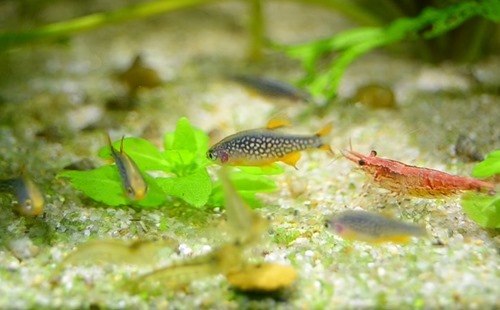
Shrimp and Celestial Pearl Danios
Shrimp can coexist with freshwater fish, but compatibility is key. Avoid boisterous or predatory fish that might see shrimp as a snack. Which fish are generally safe?
Betta fish can sometimes live with shrimp, but success depends on the betta’s temperament—some enjoy shrimp as food. Have a backup tank ready if you try this pairing.
Goldfish typically aren’t ideal tankmates, as they may eat shrimp, though larger shrimp species might coexist with them successfully.
Safer options include corydoras, small tetras, danios, harlequin rasboras, and other small-mouthed community fish. These may eat baby shrimp but usually leave adults alone.
Snails are another compatible option, helping clean waste food. However, they breed rapidly, so be prepared for a population boom.
Freshwater Aquarium Shrimp Lifespan
Most freshwater shrimp live 1-3 years, and their life cycle is intriguing. Take Red Cherry shrimp, for example: eggs hatch after 25-35 days into miniature versions of the adults. They reach juvenile stage in about 60 days and become adults just 15 days later, fully grown and ready to reproduce. Sex isn’t distinguishable until the juvenile stage.
Breeding Freshwater Shrimp

Ghost shrimp bearing eggs
Breeding shrimp varies by species—some reproduce easily with minimal effort, while others need specific conditions (e.g., brackish water). Research your species if breeding is your goal.
For Cherry shrimp, females are ready to breed post-molt, hiding and releasing pheromones to attract males. After mating, they carry 20-50 eggs under their belly for 3-5 weeks until hatching. The young eat the same food as adults.
For successful breeding, use a breeding box with hiding spots. Add the female before molting, ensure fresh water flow, and provide cover to reduce stress. In tanks with other inhabitants, a breeding box protects shrimplets from being eaten. Keep them there until they’re too large to be prey, feeding them adult food and ensuring hiding places.
Shrimp Illnesses and Diseases
Shrimp are susceptible to several diseases. Knowing the signs is crucial for timely treatment. Common issues include:
- Vorticella – A common parasitic disease appearing as white, moldy growth on the shrimp’s body, often on the head or nose. It’s a protozoan, not a fungus, and requires specific treatment to prevent fatality.
- Scutariella Japonica – A flatworm infesting shrimp gills and mantle, potentially lethal if untreated. Look for small (1-2 mm) white, stick-like growths on the head. Eggs hatch post-molt, reinfecting the shrimp—break the cycle with proper treatment.
- Bacterial Infections – Hard to diagnose, often suspected only after unexplained deaths. In transparent shrimp, organ changes may be visible. Sudden losses without symptoms might indicate a bacterial issue.
- Fungal Infections – Common in freshwater tanks, but shrimp are fairly resistant due to strong immunity. Treatments are available if an outbreak occurs.
- Parasites – Various parasites can affect shrimp, causing diverse symptoms. Note any unusual behavior and consult online resources or experts for advice.
- White Spots – Spots on shrimp may signal disease; diagnose and treat promptly to prevent spread.
Other diseases can occur, so watch for odd behavior or appearance changes and investigate potential issues. Early action prevents widespread problems.
Keep a shrimp-safe medicine stockpile—better to have it on hand than need it urgently. When medicating, double-check dosages, ensure shrimp compatibility, and remove carbon from filters (it neutralizes medication). Avoid water changes during treatment unless instructed, and reintroduce carbon afterward if needed.
What Shrimp for a Beginner Tank?

With numerous shrimp species available, the most beginner-friendly options include:
- Cherry Shrimp – Beginner-suited, grows to 1.5 inches.
- Ghost Shrimp – Beginner-suited, grows to 1.5 inches.
- Amano Shrimp – Beginner-suited, grows to 2 inches.
These species are widely available, easy to care for, and well-documented online, offering ample support for novices. They thrive in tanks of 5-10 gallons or larger, making them ideal for smaller setups.
Where Can I Get Aquarium Shrimp?
You can purchase shrimp from various sources, including Amazon, which offers a wide selection alongside tank supplies. Shipping is safe and secure. Revisit the ‘types of aquarium shrimp‘ section for specific options.

 Aqua Huna Red Rili Shrimp #ad
Aqua Huna Red Rili Shrimp #ad Marimo Moss Ball #ad
Marimo Moss Ball #ad 5 pieces of Cholla wood #ad
5 pieces of Cholla wood #ad AZOO Mignon HOB filter #ad
AZOO Mignon HOB filter #ad Sponge filter #ad
Sponge filter #ad API GH & KH test kit #ad
API GH & KH test kit #ad API 5-in-1 test strips #ad
API 5-in-1 test strips #ad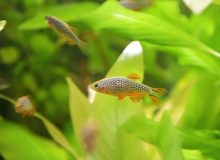
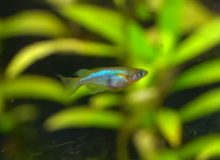
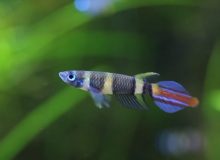
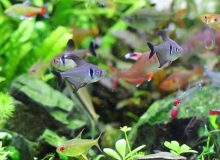
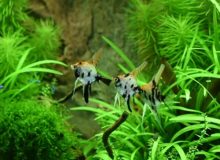
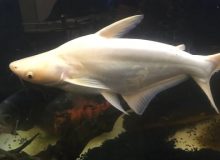
Leave a Reply